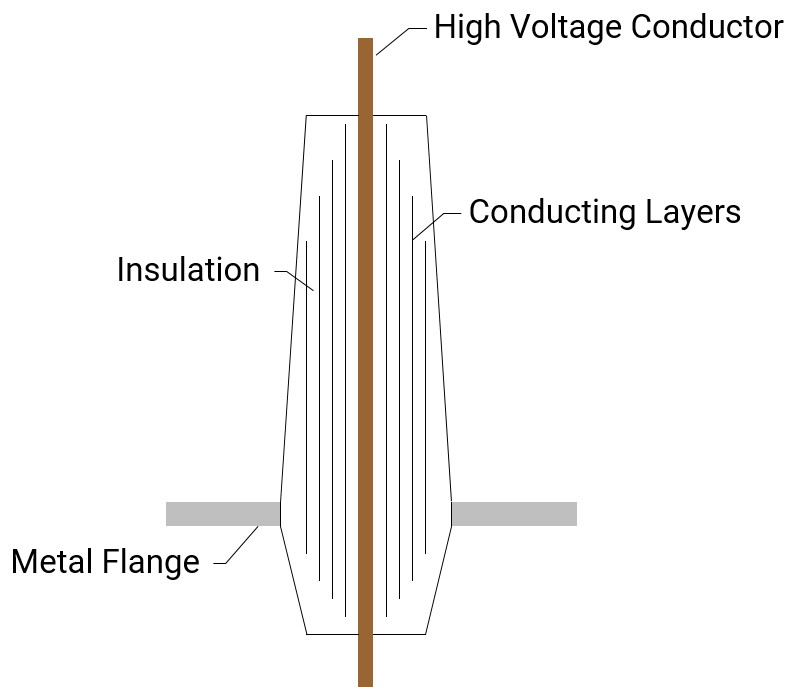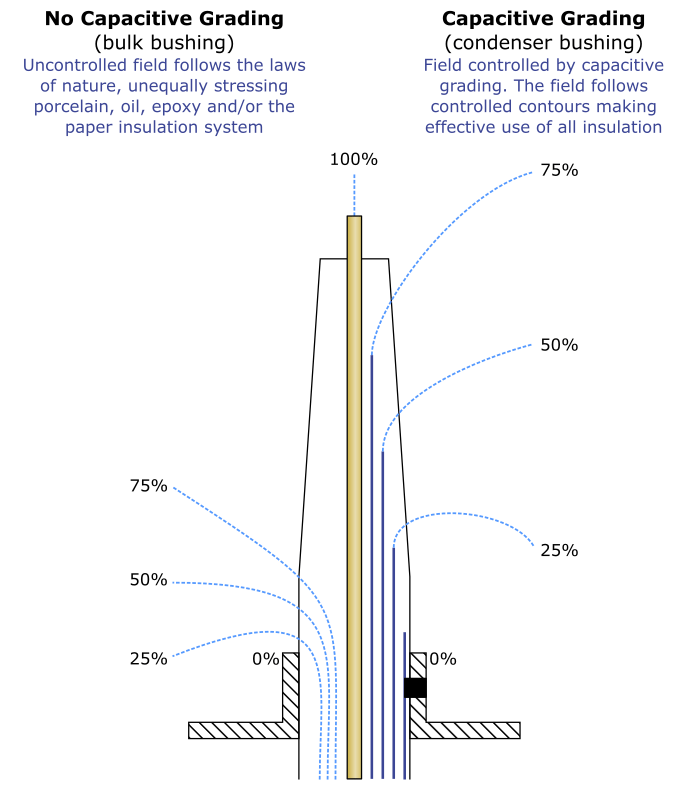Basic Concept and Construction of a Condenser Bushing Core
Condenser bushings may appear simplistic, but they are the product of highly sophisticated design and manufacturing process. Unlike solid bulk bushings, a condenser bushing uses coaxial conducting layers inserted at predetermined radial intervals within the insulation; this construction separates the centre conductor from the external insulator (housing) of the bushing.

Capacitance-Graded Bushing Condenser Core
The multiple conductive inserts create concentrically arranged and series-connected capacitive elements called ‘condensers’. Their purpose is to control (grade axially and radially) the electric field around the centre conductor so that the voltage is distributed more uniformly across the bushing’s surrounding insulation system. The electric field is controlled in such a way as to optimise a bushing’s size, mass, and electrical performance characteristics, based upon the voltage class and other duty requirements.

Difference in Electric Field Distribution between A Condenser and Non-Condenser Bushing
One end of the condenser chain is connected to the bushing’s central electrode whilst the other is connected to the test tap or voltage tap.
Want to learn more about electrical bushings?
Then check out our Introduction to Electrical Bushings video course!
Enjoying this article? Then be sure to check out our Introduction to Electrical Bushings Video Course! The course has a quiz, handbook, and you will receive a certificate when you finish the course. Enjoy!
How Electrical Bushings Work
The below video is an extract from our Mechanical and Electrical Engineering Explained Online Video Course.
Related Online Engineering Courses
Introduction to Electrical Transformers
How Electrical Transformers Work
Electrical Transformer Health Assessment
Why Are Transformers Rated in VA not W?
Electrical Substations Explained
Emergency Power Systems Explained
Emergency Generator Design Features
Additional Resources
https://en.wikipedia.org/wiki/Bushing_(electrical)
